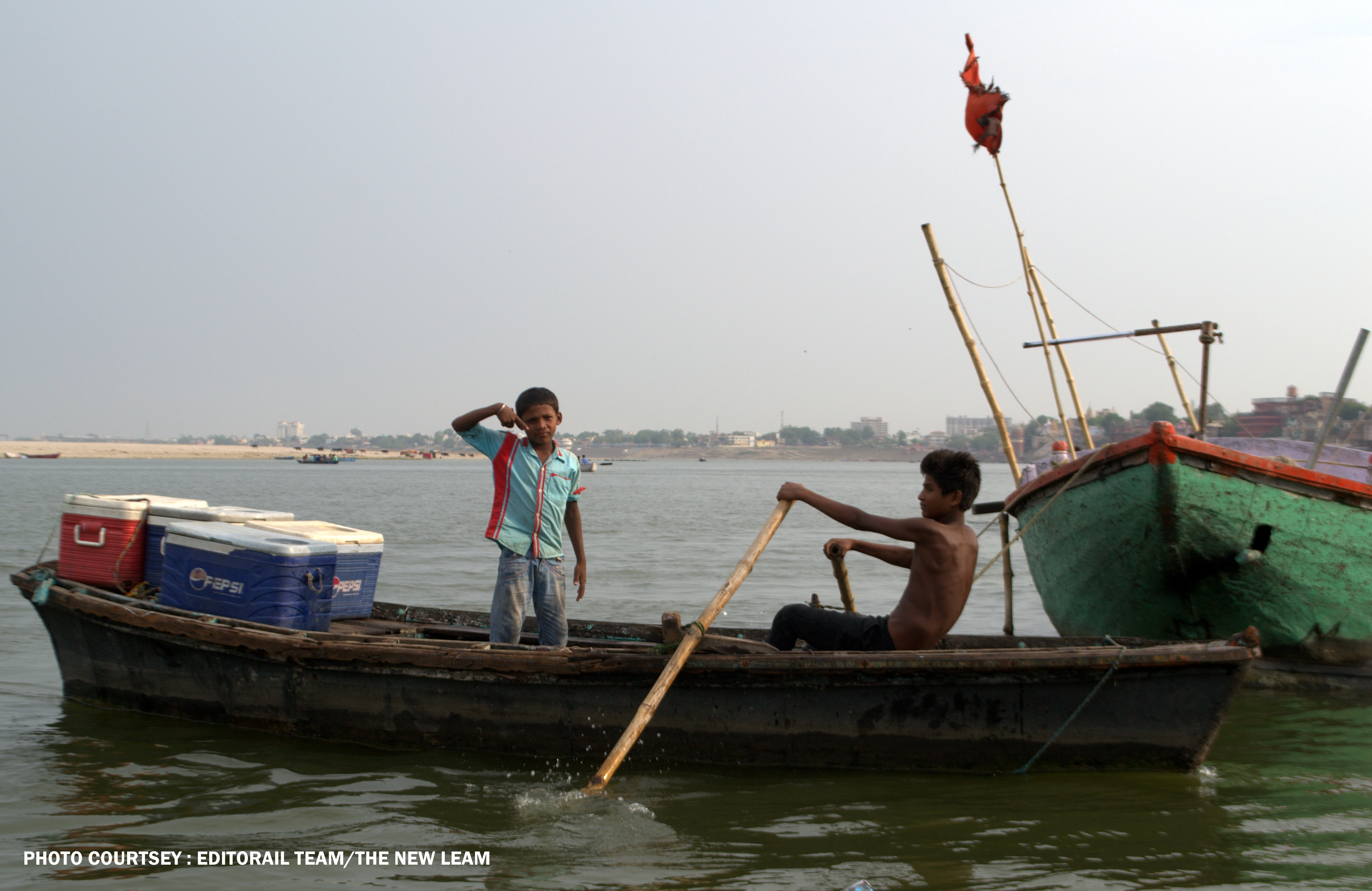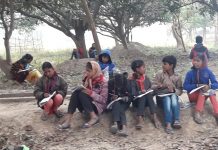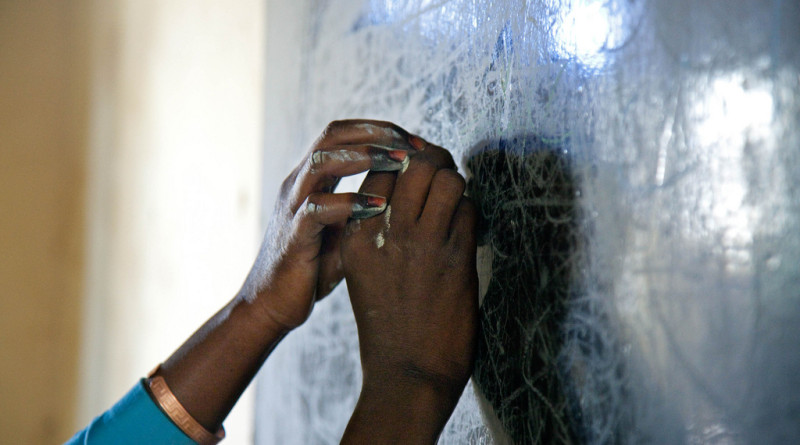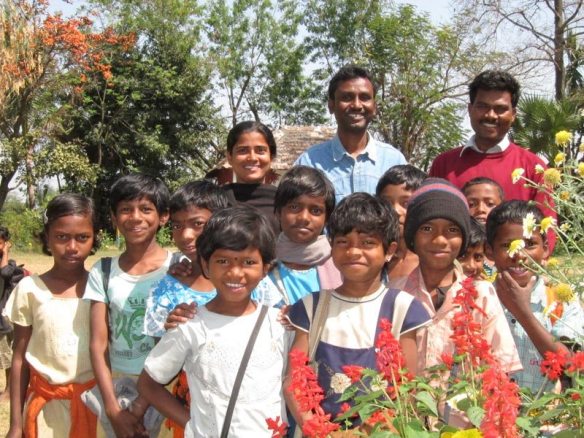SPECIAL ESSAY
Rethinking the Purpose and Basis of Indian Education
Education must not be seen only as a mechanical acquisition of knowledge, rather it should enable us to relate more deeply with our surroundings and contexts. The irony of our times is that education is dissociating us from ourselves and our reality. What is the solution and why do we find ourselves in this crisis, the article explore.
Michel Danino is currently guest professor at IIT Gandhinagar, where he is assisting the setting up of an Archaeological Sciences Centre. He is also a member of Indian Council of Historical Research. He has authored papers and books in French and English. Recent titles include The Lost River: On the Trail of the Sarasvati (Penguin India, 2010, a multidisciplinary study of the Vedic Sarasvati river) and Indian Culture and India’s Future (DK Printworld, 2011). The Dawn of Indian Civilization and the Elusive Aryans is under preparation.
In my view, Indian education is neither “Indian” nor an “education”.
Let me illustrate. A few years ago I was invited to a presentation on festivals around the world by students of a “leading” school of Coimbatore. As always, they had prepared colourful stalls with information culled mostly from the Internet, and at every stall a peppy girl or boy would recite at full speed a perfect commentary on their particular theme. I confess I would enjoy throwing a question or two at them, usually to be met by a blank stare. This was the case when I stopped at an impressive stall on festivals in the Amazonian rainforest; a bright boy reeled off an account of the various tribes and rituals there, until I asked him if he knew where we could find evergreen forests nearest to Coimbatore. He did not — and neither did his teacher, who discreetly slunk away. I had to explain that hardly seventy kilometres away, the Nilgiri Hills had fine evergreen forests called “Sholas”. This boy knew neither the region where he lived nor its main ecosystems; nor had he learned anything meaningful about the Amazonian rainforest beyond a few soon-to-be-forgotten snippets. Neither Indian nor education — yet the school would congratulate itself on this “extracurricular activity” of the students.
The problem of pedagogy
Instead of encouraging children’s natural intelligence, our “education” cripples it by cramming passive brains with countless disconnected, exploded bits of information (not to be confused with “knowledge”) irrelevant to their lives and environment. With some decent exceptions, textbooks are poorly researched, written and designed, their content often obsolete. Ordinary “good” school students can solve a maths or physics problem if it is put exactly in a form they learned at school; present it differently and they are lost — they do not recognize what they have learned. They learn chemical reactions by heart but cannot say where they might occur in nature and cannot devise a lab experiment to reproduce them. They may recite a few lines from Tagore but will be ignorant of the larger ideas he promoted as regards culture, nation or civilization.
Except for a few rare schools that dare to be different, the average pedagogy does not invite students to question or explore; it does not stimulate or awaken minds. At best, it clumsily tries to prepare the said brains for a job. Clumsily, because most of our engineering graduates, for instance, are unfit for the jobs they aspire to after sixteen years of “study”: recently, Tamil Nadu’s industry captains declared ninety per cent of them in that State to be “unemployable” — a polite euphemism, if you come to think about it, for what is really a stupendous admission of failure.
The real question, however, is whether getting a job should be seen as the ultimate goal of education or a by-product of it. If the purpose of education is to awaken and enrich minds — more than minds, in fact, since the students’ aesthetical and physical life also cries for nourishment — then we have been moving farther and farther away from this objective in the last few decades. If we are serious about developing our children’s personalities at all levels and prepare them to understand and face life, we must get out of this vicious circle of mediocrity. Vicious, for the same minds that schooling has crippled move on to higher education, where only a small proportion will finally learn what thinking means.
Vicious also because our teachers are the product of the same system. Few of them believe in researching their topic and finding innovative ways to make their teaching captivating and interactive. Most seem content to read out the textbook in the class, expecting their students to dutifully mug it up. Is it surprising that in 2012, over 99 per cent of the 7.95 lakh teachers who appeared at the Central Teacher Eligibility Test (CTET) failed to pass it?
To be fair, even the few sincere and competent school teachers have a limited space to operate in, especially in the last years when all learning is conditioned by a despotic examination system that tests the child’s mechanical memory rather than his or her intelligent grasp of concepts and principles — a cruel aberration which enables schools to boast of “centums” (and drives thousands of students to suicide every year, but that is a detail). The vicious circle closes up on itself precisely at this point.
Alienating content
A few years ago, I taught a brief course on Indian culture and ethics to MBA students in a highly rated private university of south India; at some point, I used a map of north India and it occurred to me to ask the 115 graduates sitting in front of me to name the chain of mountains south of the Ganges — none of them knew about the Vindhyas, although they were from various educational streams and all parts of the country, including northern states.
This ignorance extends to all aspects of the students’ physical or cultural environment. They will hear about tsunamis, for instance, but will be unable to recognize the phenomenon if it happens before their eyes, as the 2004 tragedy demonstrated. In contrast, Telly Smith, a British girl holidaying at Phuket with her parents, saved dozens of lives when she raised an alarm after reading in the sea all the signs that an innovative geography teacher had recently taught her class (even though tsunamis are unlikely to strike Britain!). In this particular case, the difference between good and bad education was simply a difference between life and death.
The problem goes beyond geography or history (for the latter, a survey would easily bring out how little schoolchildren know of the history of their own district). The subliminal message of our schooling is that India never produced any knowledge worth teaching; all useful knowledge must come to us from the West. Mathematical advances that originated in India — beginning with the numerals we use and their decimal system, theorems of geometry and algebra, expansions of trigonometric series — are, if at all, credited to European mathematicians who rediscovered them centuries later: the Indo-Arabic numerals are in India just “Arabic numerals”, while the “Madhava-Leibniz” or “Madhava-Gregory” series, as they are now called the world over, remain Leibniz’s or Gregory’s alone in India.
There is an ingrained inferiority complex at play here, and it’s not limited to mathematics. If British schoolchildren learn of Newton’s, Maxwell’s or Dirac’s accomplishments, if French schoolchildren are told about Lavoisier, Pasteur or Marie Curie, if German schoolchildren are taught to be proud of Gauss, Planck or Einstein, no one raises the flag of chauvinism. But suggest that Indian schoolchildren should learn something of Panini, Bharata Muni,Aryabhata, Dandin or Tyagaraja, and you risk being portrayed as jingoistic, narrow-minded or regressive. This mindset explains the polite silence that met the Fields awardee Manjul Bhargava when he stated that “students in India should be taught about the great ancient Indian mathematicians like Panini, Pingala, Hemachandra, Aryabhata and Bhaskara. Their stories and works inspired me, and I think they would inspire students across India. Many of these works were written in Indian languages in beautiful poetry, and contain important breakthroughs in the history of mathematics.” Or when this year’s Nobel prize in medicine was awarded to Tu You-You, a Chinese scientist who had explored ancient Chinese medicine for a treatment of malaria, none of our authorities in “modern medicine” wondered why India’s mainstream medical research could not have shown the way with our own wealth of traditional medical systems.
There are many other ills afflicting our educational system: poor performance of primary education, with slow and imperfect acquisition of basic skills such as fluent reading and writing; overload of curricula and excessive emphasis on theory and bookishness, to the detriment of hands-on, project-oriented learning; insufficient extracurricular activities; inadequate infrastructure (from labs to toilets to sports grounds); neglect of sports and other physical / outdoors activities, and so forth.
The way out
The first step in overhauling the school education should be for Central and State boards of education to implement a gradual but unmistakable shift from mechanical to intelligent learning, stressing the need for students to grasp concepts in every discipline and their practical applications. Within five years, we could reach an ideal proportion of 60% for testing of understanding and 40% for testing of important facts, formulas, maps, etc.
Of course, there will be a storm of protest — from teachers and parents first — because it will mean hard work for everyone as the system realigns itself to a more stimulating, creative and activity-based pedagogy.
But pedagogy alone with not suffice. Education must integrate some elements of Indian knowledge in every relevant discipline. This must be done intelligently, by relying on genuine material and avoiding all hollow glorification or exaggeration, the temptation of poor scholarship. I was privileged to be associated with the making of an elective course for the CBSE on “Knowledge Traditions and Practices of India”; more such efforts are required: in systems of language and grammar, philosophy and ethics, governance and administration, business and trade, literature and the arts, sciences and technologies, medicine and well-being, yoga and martial arts, practices of water management and environmental protection, India’s contributions have been enormous by any standard — yet Indian children have been incomprehensibly cut off from this cultural wealth which is their rightful inheritance.
Many more steps could be listed in a comprehensive attempt at educational reform, but I believe the above two should come first. A nation that can no longer think creatively and neglects its knowledge traditions is a nation that will be enslaved — if not militarily, then politically, economically and culturally. Whether our policy makers understand these issues and are prepared to take bold steps to arrest the decline of our educational system remains unclear.














